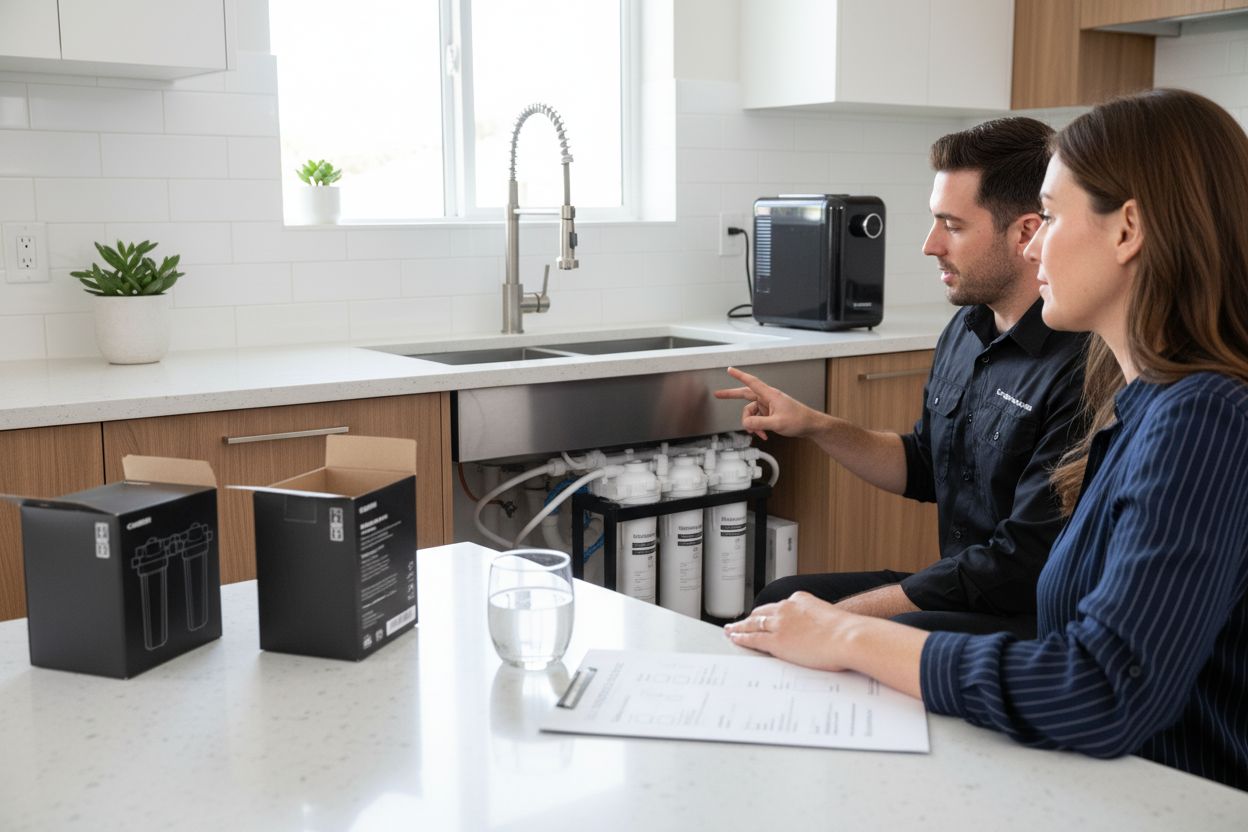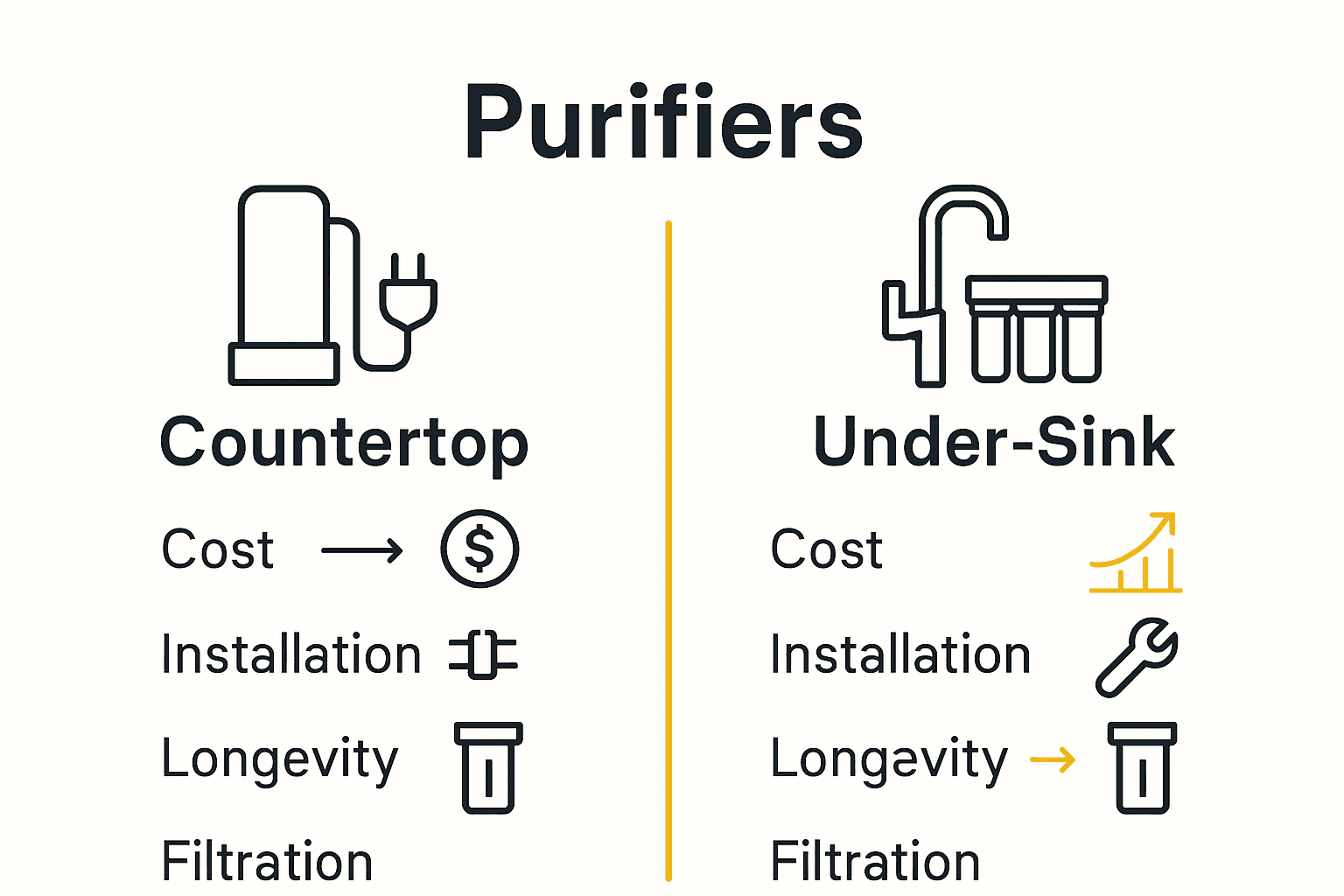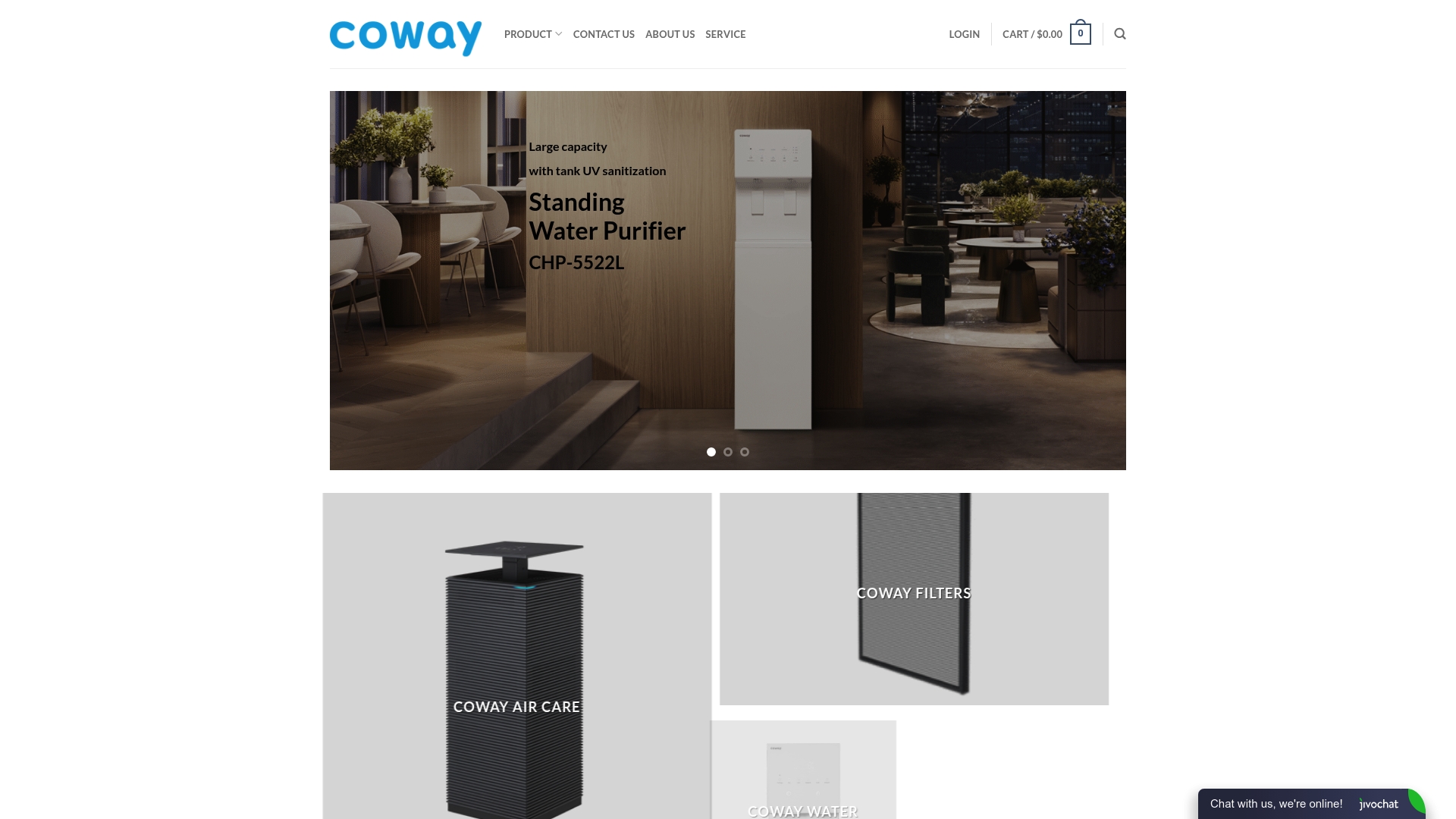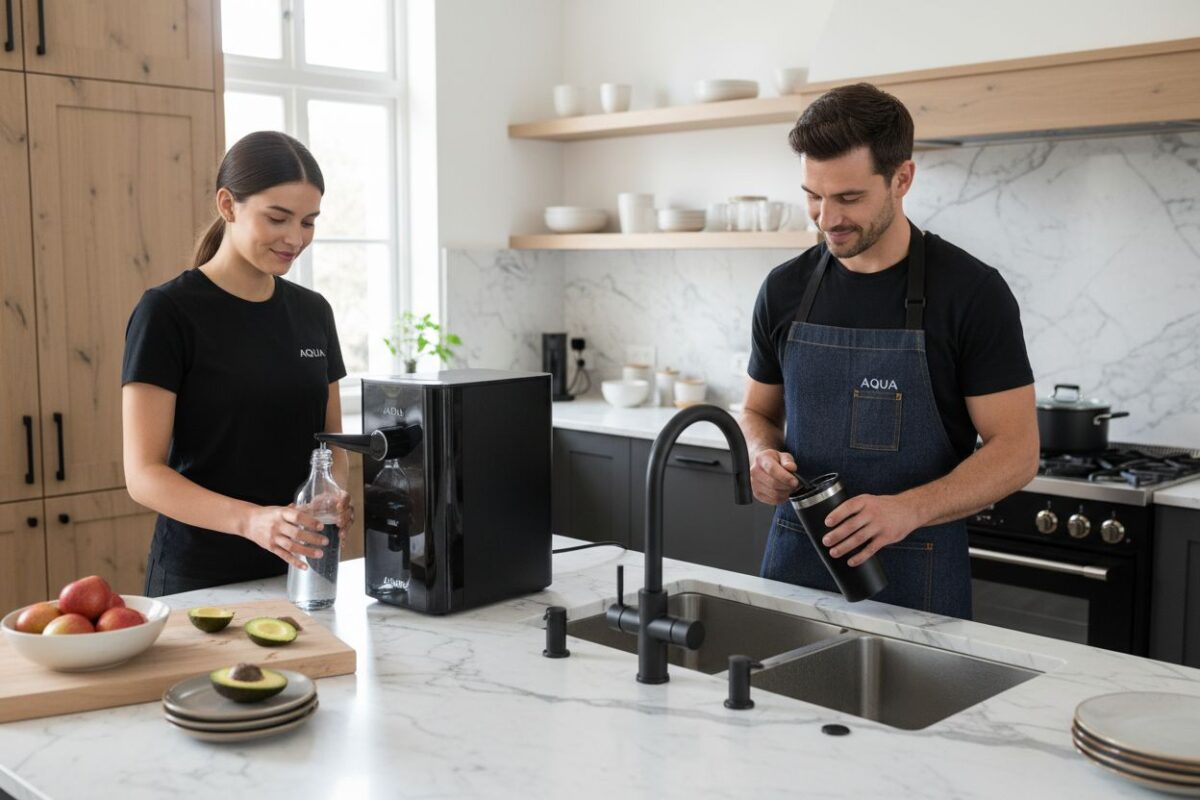Uncategorized
Complete Guide to Under Sink vs Countertop Purifiers
Did you know that nearly 40 percent of American households rely on some form of water filtration at home? With growing concerns about tap water quality, the way we choose to purify our drinking water matters more than ever. From space-saving countertop devices to powerful systems hidden under the sink, each option delivers clean water in unique ways. Understanding these differences helps you find the perfect fit for your kitchen and lifestyle.
Key Takeaways
| Point | Details |
|---|---|
| System Type Selection | Choose between countertop for portability and ease of installation, and under-sink for comprehensive filtration and aesthetics. |
| Filtration Efficiency | Under-sink purifiers generally provide better contaminant removal due to multi-stage filtration compared to countertop systems. |
| Installation and Maintenance | Countertop purifiers are easy to install and maintain, while under-sink systems require professional assistance and periodic accessibility. |
| Cost Analysis | Countertop systems have lower upfront costs, but under-sink systems offer better long-term value with longevity and efficiency. |
Table of Contents
- Defining Under Sink And Countertop Purifiers
- Filtration Technologies And Performance Differences
- Installation, Space, And Maintenance Requirements
- Advantages And Limitations Of Each System
- Cost, Longevity, And Value Comparison
Defining Under Sink and Countertop Purifiers
When it comes to water purification systems, under sink and countertop purifiers represent two distinct approaches to achieving clean drinking water in your home. Each type offers unique characteristics that cater to different household needs and preferences.
According to research from water filtration experts, countertop water purification systems are designed to sit visibly on kitchen counters, typically featuring compact 1-3 gallon tanks. These units are particularly attractive for renters or individuals seeking portable solutions. Key features include:
- Easy installation without plumbing modifications
- Portable and movable design
- Quick setup with minimal technical expertise required
In contrast, under sink water filtration systems are permanently installed beneath the kitchen sink, offering a more integrated and concealed filtration solution. As detailed by Rain King Systems, these systems deliver targeted filtration directly through your home’s plumbing infrastructure. Their primary advantages include:
- Hidden installation preserving kitchen aesthetics
- Direct connection to water supply
- Larger filtration capacity
- Dedicated separate faucet for purified water
Choosing between these two water purification approaches depends on your specific living situation, budget, and water quality requirements.
Filtration Technologies and Performance Differences
Water purification technologies differ significantly between countertop and under-sink systems, with each approach offering unique filtration capabilities. Learn more about water filtration technologies, the nuanced differences can dramatically impact your water quality.
According to research from water purification experts, both system types use multi-stage filtration capable of removing 95–99% of potential contaminants. This impressive range includes challenging impurities like:
- Chlorine
- Lead
- PFOA and PFOS
- Microplastics
However, as detailed by WP Plumbing research, the depth and complexity of filtration vary considerably. Under-sink systems typically employ a more comprehensive approach, featuring multiple filtration stages:
- Sediment pre-filtering
- Activated carbon filtration
- Reverse osmosis membranes
- Optional UV sanitization
In contrast, countertop filters often rely primarily on carbon block filtration, which provides less extensive contaminant removal. Under-sink systems generally demonstrate more consistent performance under heavy use, with filter replacements needed after hundreds of liters of processing. This makes them a more robust solution for households seeking comprehensive water purification.
Installation, Space, and Maintenance Requirements
Installation complexity varies dramatically between countertop and under-sink water purification systems, impacting homeowners’ choices. Our comprehensive guide on water filtration installation can help you understand the nuances of selecting the right system.
According to research from water purification experts, countertop purifiers offer remarkably simple setup, typically requiring just 10–15 minutes of installation time. Their plug-and-play design makes them incredibly renter-friendly and accessible. Key installation advantages include:
- No permanent modifications needed
- Minimal technical expertise required
- Easily movable between locations
- No specialized tools necessary
Conversely, WP Plumbing research highlights that under-sink systems demand significantly more complex installation. These systems typically require:
- Professional plumbing assistance
- Dedicated faucet drilling
- Complex supply and drain connections
- Approximately 20+ minutes of installation time
Maintenance requirements also differ substantially. Countertop systems usually feature simpler filter replacements, while under-sink systems demand more specialized maintenance. The trade-off comes down to comprehensive filtration versus installation convenience—each homeowner must weigh their specific needs against these practical considerations.

Here’s a comparison of installation and maintenance requirements:
| Aspect | Countertop Purifiers | Under-Sink Purifiers |
|---|---|---|
| Installation Time | 10-15 minutes | 20+ minutes |
| Tools Needed | None | Plumbing tools Drill |
| Professional Help | Not required | Often required |
| Portability | Highly portable | Fixed installation |
| Filter Replacement | Simple DIY |
Specialized More involved |
| Kitchen Space Used | Counter space | Under-sink cabinet |
Advantages and Limitations of Each System
Choosing between countertop and under-sink water purifiers involves carefully weighing their unique strengths and potential drawbacks. Our detailed guide on water purification benefits can help you make an informed decision.
According to research from water purification experts, countertop systems excel in specific scenarios. Their primary advantages include:
- High portability
- Easy installation
- Budget-friendly initial investment
- Perfect for renters and small households
However, they come with notable limitations:
- Slower water dispensing
- Occupy valuable counter space
- Lower water efficiency (around 50%)
- Visually less appealing
Conversely, WP Plumbing research highlights that under-sink systems offer comprehensive benefits for homeowners. Their standout features include:
- Instant on-demand filtered water
- Higher water efficiency (up to 75%)
- Completely hidden installation
- Continuous fresh water supply
The trade-offs involve higher upfront costs, more complex installation, and requiring periodic maintenance access beneath the kitchen sink.
Ultimately, your choice depends on your living situation, budget, and specific water filtration needs.
Cost, Longevity, and Value Comparison
Evaluating the financial implications of water purification systems goes beyond initial purchase price. Learn more about water filtration value considerations, homeowners must analyze long-term expenses and performance.
According to research from water purification experts, countertop systems present a more budget-friendly initial investment. Their financial profile typically includes:
- Lower upfront purchase costs
- Monthly electricity expenses of $2–5
- Annual filter replacement costs of $50–100
- Shorter filter lifespan
- Less water-efficient design
In contrast, WP Plumbing research reveals that under-sink systems, while requiring higher initial investment, offer superior long-term value. Their economic advantages encompass:
- Higher upfront equipment costs
- Monthly electricity expenses of $3–7
- Annual filter costs of $40–80
- Reverse osmosis filters lasting up to 48 months
- Significantly more water-efficient operation
While under-sink systems demand more substantial initial capital, their extended filter life, enhanced efficiency, and lower long-term maintenance costs make them a financially strategic choice for homeowners committed to sustainable water purification solutions.

Upgrade Your Water, Upgrade Your Life
Still trying to decide between under sink and countertop purifiers? If you feel overwhelmed by the challenge of choosing between convenience, aesthetics, and safer drinking water, you are not alone. This guide highlighted pain points such as installation hassle, filtration performance, and long-term value. At Coway, we understand these concerns and design our water purification systems to solve them all—so you never have to compromise. Explore our curated range, suited for every lifestyle, and discover the perfect solution for your home in our Uncategorized Archives.

Make a smart move today. Visit https://cowayswaterpurifier.com to find advanced under sink and countertop purifiers with proven filtration, sleek designs, and full support including free installation and maintenance. Take control of your health and enjoy peace of mind with every glass—shop now and start living better.
Frequently Asked Questions
What is the main difference between under sink and countertop purifiers?
Under sink purifiers are permanently installed beneath the sink and offer a hidden solution with higher capacity and direct plumbing connection, while countertop purifiers are portable units that sit on the counter, typically easier to install with no plumbing changes required.
Which type of water purifier has better filtration technology?
Under sink purifiers usually employ a more comprehensive multi-stage filtration process, including reverse osmosis and optional UV sanitization, making them generally more effective at removing a wider range of contaminants compared to countertop purifiers, which predominantly use carbon block filtration.
How long does it take to install a countertop purifier compared to an under sink purifier?
Countertop purifiers typically require only 10-15 minutes for installation and do not need any permanent modifications, whereas under sink purifiers can take over 20 minutes to install and may need professional plumbing assistance.
Are there any maintenance differences between under sink and countertop purifiers?
Yes, countertop purifiers usually have simpler filter replacements that can be done DIY, while under sink purifiers require more specialized maintenance and potentially more complex filter changes, given their multiple filtration stages.
Recommended
- What is Under-Sink Water Purifier? Understanding Its Importance – Coway Water Purifier
- 7 Advantages of Under-Sink Purifiers for Your Home – Coway Water Purifier
- Under Sink water purifiers Archives – Coway Water Purifier
- Countertop Water Purifiers Archives – Coway Water Purifier

